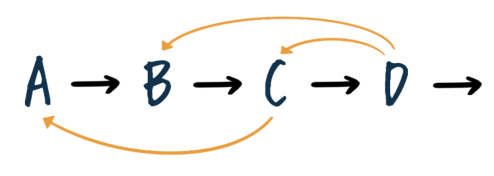
Omplexity顾问团队参与过全球超过六十个系统图绘製的大型专案,过往的合作客户包含Google, Hitachi, 广达, Nike, 微星科技, 联合国, 世界银行及世界经济论坛等机构等客户。 创办人薛乔仁博士毕业于哈佛大学与麻省理工学院,是国际知名的系统变革专家。 http://www.omplexity.com
The basic concept of systems thinking - Feedback "feedback"
Now that you know how to define systems and how systems explain various life events (you can read the previous article first: What is "systems thinking"? ), how do you actually think from a systems thinking perspective? First, we should understand the implications behind systems thinking. This article will share the important concept of "feedback" in systems thinking, and use causal circuit diagrams to help illustrate.

(After a meeting one day...)
Anderson: Omg! The briefing you just reported was gorgeous!
Bella: Oh...but the Feedback I just said wasn't this Feedback...
Feedback "feedback" means "returning information", and the concept of "feedback" is the key to distinguish the two thinking modes of feedback loop and linear thinking. While linear thinking looks at the world in terms of a series of one-way causal relationships (event A leads to event B, event B leads to event C, which then leads to event D...), the feedback loop is to see the world as multiple interconnected Therefore, the indirect effect caused by an element may "feedback" to itself (event A leads to event B, event B leads to event C, and event C will "feedback" to lead to event A).


Although the two ways of thinking may seem similar, when we think linearly, we tend to interpret them in terms of a series of events that occur one after the other. For example, when sales are down (Event A), we decide to hold a marketing campaign (Event B) to increase orders (Event C). An increase in orders increases sales (event D), which in turn increases undigested orders (event E). Not long after, we again observed a drop in sales (Event F) and another marketing campaign (Event G)…. In the above example, event B and event G are the same thing, however, in linear thinking, we treat it as two separate and unrelated events.
In contrast, when we think in terms of feedback loops, we constantly ask ourselves, "How will the impact of this action feed back into the system?" So, when we see a drop in sales (Event A), we are doing the same thing as holding a marketing campaign (Event A). B) After the increase in orders (event C) and the increase in sales (event A), the increase in undigested orders (event D) directly affects sales (event A) and orders (event C) again, and this situation will make We repeat the marketing campaign (Event B) that was originally undertaken.
You might be thinking, these two modes of thinking are different, but then what? I am the person responsible for taking action and making decisions, so why is the difference between these two perspectives important, since using these two methods will not change the actual situation?
We can see a key insight from systems thinking: the way things are told affects the decisions made . If we revisit the two ways of thinking, it is not difficult to see that linear thinking tends to focus us on a single pair of causal events. But if you look at the relationships of all events that are cyclically affecting each other, you will find that it is more likely to find a fundamental solution than looking at a pair of causal events. Our focus is certainly not to delve into the real meaning behind the two modes of thinking, but the intention is - when we understand the behavioral relationships that take place in complex systems, we can manage systems more effectively. A fundamental problem with linear thinking is that while you know what events happen and when, you tend to have little idea of how and why things happened. The main purpose of systems thinking is to gain a better understanding of all the driving forces behind each behavior .


In the next article, we'll look at "The Foundations of System Behavior: Reinforcement and Conditioning Processes" to learn how to use systems thinking to deconstruct system behavior.
Source: Introduction to Systems Thinking
Want to learn more about systems thinking?
The Omplexity consultant team designed the course of the live online video class in response to the challenge of distance The efficiency of agitation and even strategy discussions! You will experience these methods in practice, learn the theory behind them, practice in groups and get individual feedback through group project-based learning.
Like my work?
Don't forget to support or like, so I know you are with me..
Comment…